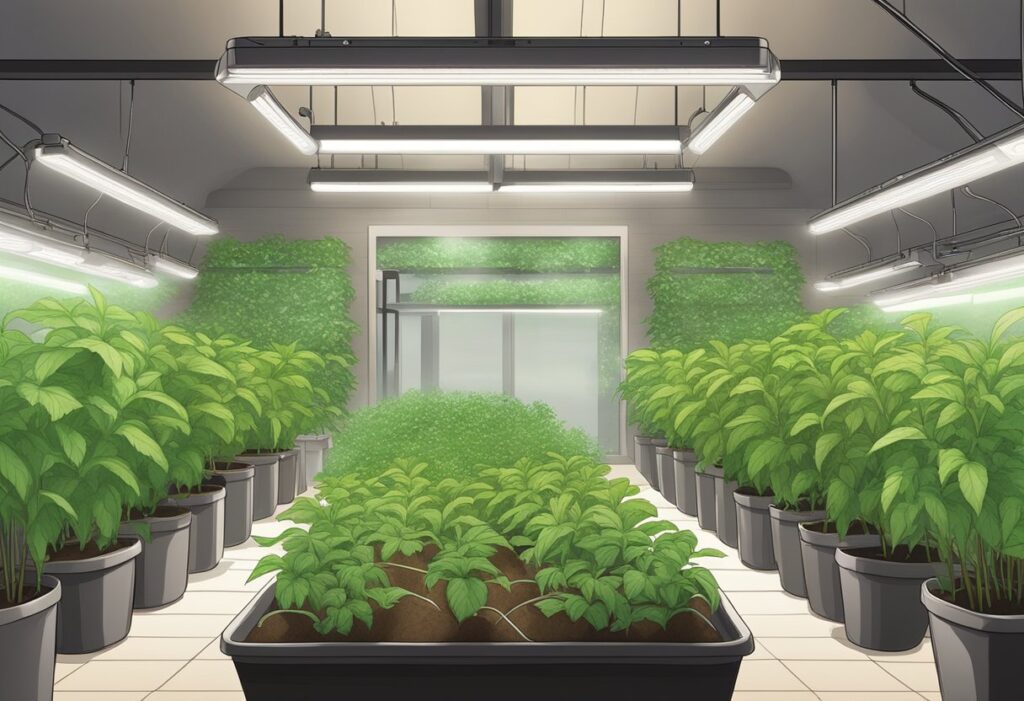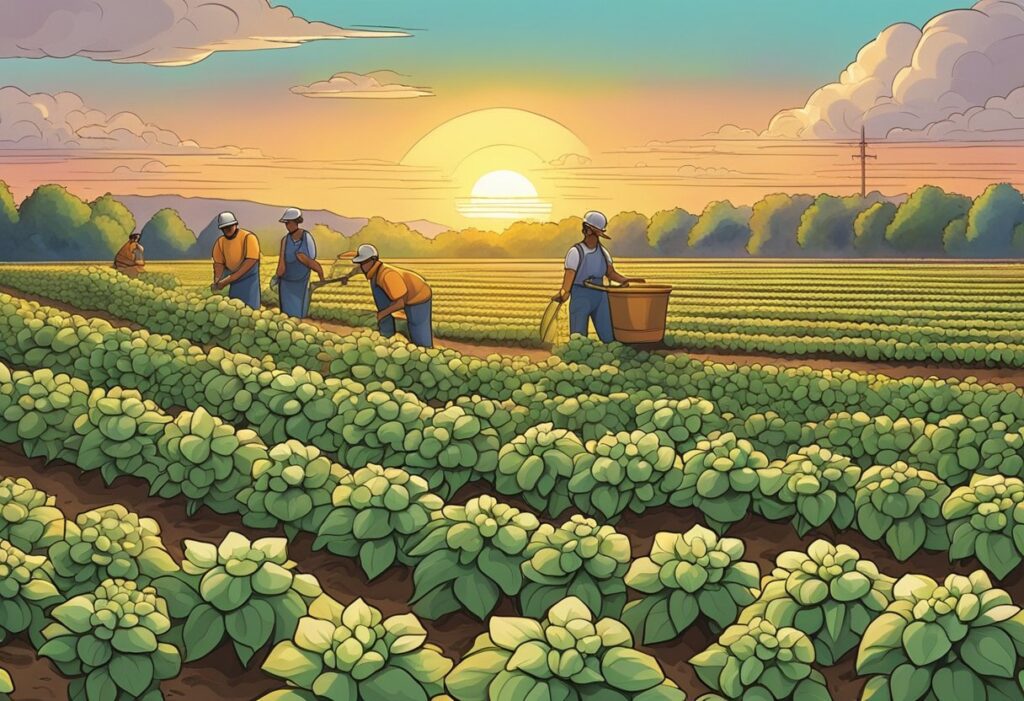
As you explore the world of cannabis cultivation in Canada, it’s essential to understand the unique attributes of autoflower seeds, how they differ from photoperiod varieties, and how the Canadian climate influences their cultivation.
Autoflower seeds automatically transition from the vegetative growth stage to the flowering stage with age, as opposed to photoperiod varieties that rely on specific light cycles to flower. Autoflowers have a notable advantage for you as a grower in Canada – their quick life cycle allows for multiple growing cycles in a single season, irrespective of the amount of daylight.
Autoflower cannabis seeds are bred by incorporating genetics from Cannabis ruderalis, known for its hardiness and ability to flower automatically. This genetic modification provides autos with several beneficial traits:
In Canada, the climate varies widely, making autoflower seeds a robust choice for both indoor and outdoor growing. They are less dependent on seasonal changes and sensitive to:
For indoor cultivation, utilizing full-spectrum LED lights can replicate the advantageous outdoor conditions, ensuring your autoflowers thrive. The inherent flexibility of autoflower seeds in Canada makes it easier for you to manage outdoor grows as they are not tied to the lengthening days of summer.

To ensure the success of your autoflower seeds in Canada, you need to establish a controlled environment that caters specifically to their unique growth requirements. This encompasses a full spectrum of factors from lighting to soil health.
Effective lighting is fundamental for autoflowering cannabis plants. As indoor growers, you should aim to provide your plants with:
Soil quality and nutrient availability will set the foundation for your cannabis plants to thrive. Here’s what you need to do:
Balanced watering and humidity levels are crucial for the health of your autoflower cannabis:
Maintaining the right temperature and ensuring fresh air can significantly influence your plant’s health:

Mastering the harvesting and maximizing of yields from autoflower seeds in Canada is essential to reap the best possible results. From understanding the stages of growth to employing the right training techniques, let’s explore how you can enhance your autoflower yields effectively.
Autoflowers transition from germination to the harvesting stage remarkably fast. After germination, your young plant will spend around 2-3 weeks in the seedling stage, developing its first true leaves. The vegetative stage spans approximately 3-6 weeks, where growth is vigorous. Finally, expect flowering to commence between 6-8 weeks. The key to maximizing yield is a consistent and controlled environment during these stages.
Applying certain training techniques can greatly enhance your autoflower yields. Low-Stress Training (LST) gently bends and ties down branches, exposing more of the plant to light without causing significant stress. Topping, another technique, involves clipping the top of the main stem to encourage lateral growth and more bud sites. Although topping is more stressful, when done correctly and early, it can lead to increased yields.
Knowing when to harvest is crucial to ensure maximum potency and yield. Look for the trichomes on the buds; when they shift from clear to a cloudy, milky color, it’s the prime time to harvest. Waiting too long can lead to a decrease in THC levels. For harvesting, use clean, sharp scissors to trim the buds, carefully removing the leaves while preserving the trichomes.
After harvesting your autoflowers, drying and curing are vital steps for enhancing the flavor and quality of your buds. Hang the trimmed buds upside down in a controlled environment with ideal humidity (45-55%) and temperatures around 21°C. The curing process involves placing the dried buds in airtight containers and opening them periodically to allow for air exchange. This improves the overall smoothness and taste.
When considering autoflower seeds in Canada, your yields can vary greatly based on specific conditions and techniques. Understanding these can help you maximize your harvest.
Your autoflowering cannabis yield in Canada is largely affected by the climate’s unique conditions. Optimal temperatures of 70-85°F (21-29°C) and humidity levels around 40-60% are crucial. Strains with ruderalis genes are well-suited to the Canadian climate, adapting to shorter summers and longer daylight hours.
Indoor autoflowering cannabis plants can have impressive yields, but they typically do not match those of photoperiod strains. Autoflowers grow faster, with a seed-to-harvest time of 8-10 weeks, allowing for multiple harvests within a single season, which can compensate for the smaller yield per harvest.
Yes, there’s a difference. Indoors, growers can control the environment to optimize conditions, but space is usually limited, which can restrict yield. Outdoors, autoflowers can grow larger, with potential yields up to 160 grams per plant, but they’re at the mercy of weather and pests.
A 600W light setup can significantly affect your autoflowering cannabis yield. High-quality LED lights mimic the full spectrum of sunlight, promoting strong vegetative growth and flowering. However, the specific light setup should align with the size of your grow area to ensure efficiency and prevent light burn.
Yield ranges for autoflowering cannabis plants can vary. Indoors, with optimal conditions, you can expect about 400-500g/m². For outdoor grows, yields can be more variable due to environmental factors, but good conditions could lead to similar or slightly lower yields per plant when properly spaced.
We ship and deliver world wide via USPS and various couriers.
We offer a wide range of secure and anonymous online payment options.
We care about you, our customer. Please contact us with any questions or concerns.
Find out more about the benefits of being a loyal and regular customer.
WE ARE EVERY GROWERS ONE STOP SHOP TO ACQUIRE PREMIUM CANNABIS SEEDS FOR SALE IN THE USA, CANADA AND AUSTRALIA

Farmers Lab Seeds 2024, | All Right Reserved
Seeds are sold as novelty items, souvenirs, and collectibles. They contain 0% THC. We encourage our customers to check the legislation in their Country, State, Province, and Municipality prior to purchasing items from our store. We do not provide growing information.
All seeds are sold as hemp, and lab tested under 0.3% THC. This product is not for use by or sale to persons under the age of 21. This product should be used only as directed on the label. It should not be used if you are pregnant or nursing. Consult with a physician before use if you have a serious medical condition or use prescription medications. A Doctor’s advice should be sought before using this and any supplemental dietary product. All trademarks and copyrights are property of their respective owners and are not affiliated with nor do they endorse this product.
These statements have not been evaluated by the FDA. This product is not intended to diagnose, treat, cure or prevent any disease. Individual weight loss results will vary. By using this site, you agree to follow the Privacy Policy and all Terms & Conditions printed on this site. Void Where Prohibited by Law.